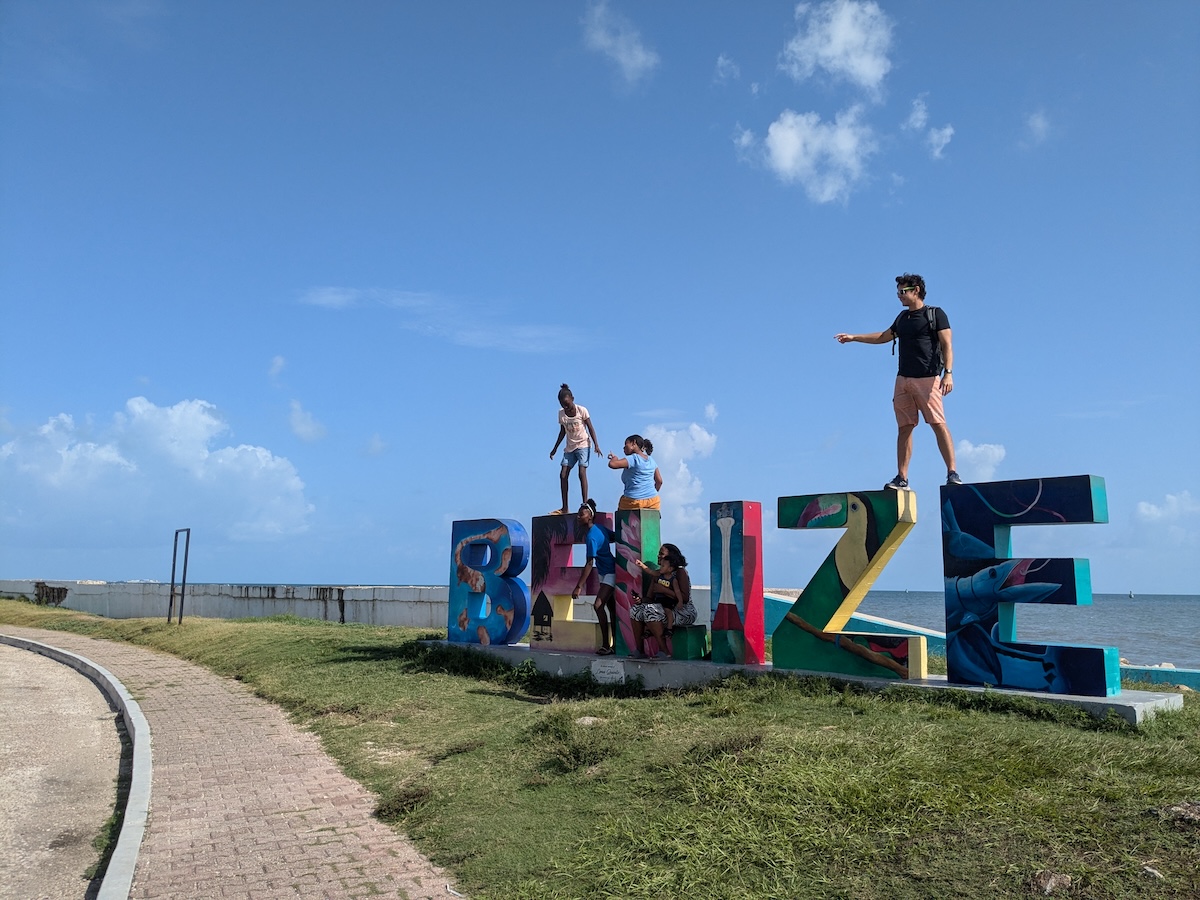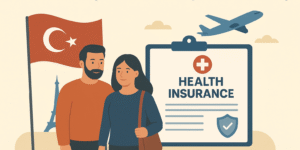Hiking, or as some say, “trekking,” is one of the most rewarding ways to explore the world, offering breathtaking landscapes, physical challenges, and unforgettable experiences. Quite a few of my travel itineraries include hikes if they are available at my destination
I’ve done a lot of hiking in Idaho, where I live, as well as in South Korea, where I used to live—a country where mountains cover 70% of the land. One of my most memorable hikes was climbing Mount Kinabalu, the highest mountain in Southeast Asia. In 2026, I’m planning to climb Kilimanjaro in Tanzania… fingers crossed!
However, these adventures come with risks—unpredictable weather, altitude sickness, injuries, and remote locations can turn a dream trip into a logistical nightmare. Plus, I often hike with my partner, Nikki, and I’d feel immense guilt if something happened to her because I hadn’t prepared well enough.
So, having the right travel insurance is essential for hikers and trekkers. A good policy should cover medical emergencies, evacuation, trip cancellations, and even gear protection. But not all insurance plans are created equal—some exclude high-altitude trekking or remote areas, while others offer specialized adventure coverage.
In this guide, we’ll explore the best travel insurance options for hiking and trekking, comparing coverage, costs, and key features to help you choose the right policy for your next adventure.
Why Do You Need Specialized Travel Insurance for Hiking and Trekking?
Standard travel insurance policies often exclude high-risk activities like trekking above certain altitudes or in remote regions. If you’re planning a challenging hike (such as the Inca Trail, Everest Base Camp, or Patagonia’s Torres del Paine), you’ll need a policy that includes:
✅ Emergency medical coverage – For injuries or altitude sickness.
✅ Search and rescue (SAR) and evacuation – Helicopter evacuations in remote areas can cost tens of thousands of dollars.
✅ Trip cancellation/interruption – In case you need to cancel due to injury or unforeseen events.
✅ Gear and equipment protection – Coverage for lost, stolen, or damaged hiking gear….ideally, but not super essential for your personal safety.
✅ High-altitude trekking coverage – Some policies exclude hikes above 4,000–6,000 meters.
Now, let’s dive into the best travel insurance options for hikers and trekkers.
IMPORTANT NOTE: generally speaking, for all the travel insurance options here, you are still not covered for professional, organized or rewarded sports, or for expeditions, and you are still required to ensure your safety.
6 Best Travel Insurance for Hiking and Trekking in 2025
- SafetyWing – Best for High-Altitude Hikes, especially for Digital Nomads and Long-Term Trekkers
Coverage Highlights:
✔ Medical coverage up to $250,000.
✔Emergency evacuation (up to $100,000).
✔ Covers trips up to 364 days (renewable).
Pros:
- Affordable monthly subscription model.
- Good for long-term remote workers and digital nomads who hike often.
- Includes COVID-19 coverage and 24/7 worldwide emergency assistance.
- Huge selection of adventure sports if you include the sports add-on (check out the full selection of adventure sports activities at the end of this list)
- SafetyWing covers mountaineering up to 6,000 meters (19,685 feet) with the Adventure Sports add-on
- They cover one child under 10 for free (great for family hikes!)
Cons:
- Only covers hikes up to 4,500 meters (14,764 feet) without the sports add-on.
- Lower gear protection than specialized insurers.
Best For: those who hike often, especially long-term travelers and digital nomads.
Additional Details:
SafetyWing is unique because it operates on a subscription model, making it ideal for travelers who don’t have a fixed return date. It’s particularly popular among digital nomads who may spend months abroad and want continuous coverage.
One downside is that high-altitude trekking is not automatically covered, so you’ll need to verify if your specific hike is included without the sports add-on.
Additionally, gear protection is minimal, so if you’re carrying expensive equipment, you might need a separate policy. However, for budget-conscious travelers who need flexible, long-term coverage, SafetyWing is a solid choice.
- World Nomads – Best for Hikers on short trips
Coverage Highlights:
✔ Covers 200+ adventure activities (including trekking up to 6,000m).
✔ Emergency medical and evacuation (up to $100,000).
✔Gear theft /loss coverage (up to $1,000).
✔ 24/7 emergency assistance.
Pros:
- Covers most popular trekking routes (Kilimanjaro, Everest Base Camp, etc.).
- Two plan levels (Standard and Explorer) for different budgets.
Cons:
- No coverage for extreme mountaineering (above 6,000m).
- Gear coverage limits may be low for expensive equipment.
- High premiums compared to similar travel insurance options
Best For: Backpackers and trekkers on multi-destination trips.
Additional Details:
World Nomads is known among adventure travelers because of its extensive list of covered activities. The Explorer Plan is particularly useful for trekkers, as it includes higher medical and evacuation limits. However, it’s important to note that while it covers trekking up to 6,000 meters, technical climbing (using ropes or ice axes) is excluded.
Another advantage is their 24/7 emergency assistance, which can be crucial in remote areas. They also offer trip interruption and delay coverage, which can reimburse you for unexpected costs if your hike is disrupted. However, their gear coverage is relatively low—only up to $1,000—so if you’re carrying expensive cameras or high-end hiking equipment, you may need supplemental insurance.
- IMG Global – Best for High-Altitude Trekking on basic plan
Coverage Highlights:
✔ Covers trekking up to 4,500m (higher with optional add-ons).
✔ Emergency medical ($500,000+) and evacuation.
✔ Trip interruption and lost baggage coverage.
Pros:
- Strong medical coverage for remote areas.
- Customizable plans for extreme adventures.
Cons:
- Not all high-altitude treks are automatically covered.
- Slightly more expensive than basic plans.
Best For: Hikers tackling moderate to high-altitude treks (e.g., Annapurna Circuit).
Additional Details:
IMG Global is a strong choice for trekkers who need higher medical coverage limits—some plans go up to $1,000,000, which is essential for remote rescues. They also offer optional adventure sports riders, meaning you can add high-altitude trekking coverage if your hike exceeds their standard limit of 4,500 meters.
One drawback is that pre-existing conditions are not covered unless you purchase an additional waiver. Additionally, their trip cancellation benefits are not as robust as some competitors, so if that’s a priority, you may want to supplement with another policy. Still, for serious trekkers heading to challenging destinations, IMG Global provides reliable protection.
- Allianz Travel Insurance – Best for Comprehensive Coverage
Coverage Highlights:
✔ Emergency medical and evacuation.
✔ Trip cancellation/interruption protection.
✔ Optional adventure sports coverage.
Pros:
- Trusted global insurer.
- Good for multi-activity trips (hiking + other sports).
Cons:
- High-altitude trekking may require an add-on.
- Gear coverage is limited.
Best For: Travelers who want a balance of trekking and general travel coverage.
Additional Details:
Allianz is one of the most reputable names in travel insurance, offering reliable coverage for a wide range of travelers. Their OneTrip Premier Plan includes robust trip cancellation and interruption benefits, which can be useful if your hiking plans change unexpectedly.
They also offer optional adventure sports upgrades, though these may come at an additional cost.
However, their standard policies do not automatically cover high-altitude trekking, so you’ll need to confirm whether your specific hike is included. Additionally, gear protection is limited, so if you’re carrying expensive equipment, you may need a separate policy.
For travelers who want a well-rounded plan with strong cancellation benefits, Allianz is a great option.
- Global Rescue – Best for Remote Evacuation Services
Coverage Highlights:
✔ Specializes in medical evacuations from extreme locations.
✔ 24/7 security and medical advisory services.
✔ Can be paired with other insurance for full coverage.
Pros:
- Unmatched evacuation support.
- Works in war zones and ultra-remote areas.
Cons:
- Does not cover trip cancellations or gear loss.
- More expensive than standard insurance.
Best For: Expedition-style treks in dangerous or isolated regions.
Additional Details:
Global Rescue is the gold standard for emergency evacuations, making it ideal for trekkers heading to extremely remote or high-risk areas. Unlike traditional insurers, they dispatch their own teams for rescues, which can be critical in regions with limited infrastructure. Many professional climbers and expedition groups rely on Global Rescue for this reason.
However, it’s important to note that they do not provide trip cancellation or gear coverage, so you’ll need to pair it with another policy for full protection. Additionally, their services are more expensive than standard travel insurance, but for extreme adventurers, the peace of mind is worth the cost.
- Travelex – Best for Family Hiking Trips
Coverage Highlights:
✔ Covers children for free on family plans.
✔ Optional adventure sports upgrade.
✔ Emergency medical and evacuation.
Pros:
- Family-friendly pricing.
- Good for moderate-altitude hikes.
Cons:
- High-altitude exclusions apply.
- Gear coverage is basic.
Best For: Families hiking in national parks or well-traveled trails.
Additional Details:
Travelex is an excellent choice for families because children under 17 are covered for free under their family plans. Their Travel Select Plan includes solid medical and evacuation coverage, along with trip cancellation benefits, which can be useful if plans change due to weather or illness.
However, like many insurers, high-altitude trekking may require an additional rider, so be sure to check the fine print. Their gear protection is also limited, so if you’re carrying expensive equipment, you may need supplemental coverage.
For families planning hikes in places like Yellowstone or the Swiss Alps, Travelex offers a good balance of affordability and protection.
SafetyWing sports covered without the adventure sports add-on:
| Land/Contact Sports | Water/Winter Sports | Air/Extreme Sports |
| Archery | Angling | Ballooning |
| Badminton | Canoeing | Bungee jumping |
| Baseball | Deep sea fishing | Canyon swing |
| Biking (including touring and organized tours) | Dog sledding (not racing or competing) | Canyoning |
| Bowling | Glacier walking under 4,500m altitude | Dirt boarding |
| Bushwalking | Ice skating (indoor or outdoor) | Flying as a passenger |
| Camel riding / trekking | Ice climbing under 4,500m altitude | Hot air ballooning as a passenger |
| Camping under 4,500m altitude | Jet boating | Rap jumping |
| Capoeira dancing | Jet skiing | Sandboarding |
| Clay pigeon shooting | Kayaking | Zip line |
| Cricket | Rowing / sculling | Zorbing |
| Cycling under 4,500m altitude | Sailing | |
| Fell running / walking | Sand skiing | |
| Fencing | Sea canoeing | |
| Golf | Sea kayaking | |
| Gymnastics | Snorkeling | |
| Hiking under 4,500m altitude | Snow rafting | |
| Horse riding | Snowboarding (not off-piste) | |
| Hunting (excluding big game) | Skiing (not off-piste) | |
| Land surfing | Sleigh rides | |
| Moped biking (except as excluded) | Sledding | |
| Mountain biking under 4,500m altitude | Speed boating | |
| Netball | Stand-up paddle surfing | |
| Orienteering | Surfing | |
| Paintballing | Swimming | |
| Rambling | Tubing | |
| Rifle range shooting | Tubing on snow | |
| Rock climbing | Wake skating | |
| Roller blading | Wakeboarding | |
| Roller skating | Water skiing | |
| Safari tours | Windsurfing | |
| Skateboarding | Yachting | |
| Soccer | ||
| Squash | ||
| Stilt walking | ||
| Table tennis | ||
| Ten pin bowling | ||
| Tennis | ||
| Trail bike riding | ||
| Trekking under 4,500m altitude | ||
| Ultimate frisbee | ||
| Via ferrata under 4,500m altitude | ||
| Volleyball | ||
| Walking | ||
| Weightlifting or cardio at the gym | ||
| Yoga |
SafetyWing sports covered with the adventure sports add-on (in addition to sports already covered):
| Land/Contact Sports | Water/Winter Sports | Air/Extreme Sports |
| American football | Bobsleigh | Aviation |
| Aussie rules football | Cave diving | Hang gliding |
| Boxing | Free-style skiing | High diving |
| Ice hockey | Ice hockey | Parachuting |
| Karting | Kite-surfing | Parasailing |
| Luge | Scuba diving (with instructor) | Paragliding |
| Martial arts | Ski/snowboard jumping | Skydiving |
| Motorbiking | Ski-flying | Tandem skydiving |
| Motorized dirt bikes | Skiing/snowboard acrobatics | |
| Quad biking | Skeleton | |
| Rugby | Snow mobile | |
| Wrestling | Spelunking | |
| Tobogganing | ||
| Whitewater rafting |
For updated list, please check here.
Key Factors to Consider When Choosing Trekking Insurance
- Maximum Altitude Coverage
- Some policies exclude hikes above 4,000m (e.g., Machu Picchu is fine, but Everest Base Camp may not be).
- Check if your trek requires an add-on (e.g., SafetyWing covers up to 6,000m).
- Emergency Evacuation Limits
- Helicopter rescues in the Himalayas can exceed $20,000. Ensure your policy covers at least $20,000. Ensure your policy covers at least $100,000.
- Pre-Existing Medical Conditions
- Many insurers exclude pre-existing conditions unless declared and covered under an additional premium.
- Trip Cancellation & Delays
- Useful if weather or health issues force you to postpone.
- Gear Protection
- If carrying expensive equipment (cameras, drones, hiking gear), look for higher coverage limits.
Top Trekking Destinations & Recommended Insurance
| Destination | Recommended Insurance | Why? |
| Everest Base Camp (5,364m) | SafeyWing (with sports add-on) /World Nomads Explorer / Global Rescue | High-altitude coverage, evacuation included. |
| Inca Trail (4,200m) | Allianz / IMG Global /SafetyWing | Moderate altitude, good medical coverage. |
| Kilimanjaro (5,895m) | World Nomads / IMG Global / SafeyWing (with sports add-on) | High-altitude and medical evacuation. |
| Patagonia (Torres del Paine) | SafetyWing / Travelex | Remote but lower altitude; good for long-term travelers. |
| Annapurna Circuit (5,416m) | Global Rescue / IMG Global / SafeyWing (with sports add-on) | High-altitude and remote rescue needed. |
Final Tips Before You Buy
🔹 Read the fine print – Some policies exclude “technical mountaineering” or specific regions.
🔹 Declare pre-existing conditions – Otherwise, claims may be denied.
🔹 Check COVID-19 coverage – Some insurers now include pandemic-related cancellations.
🔹 Compare multiple quotes – Prices vary based on age, trip length, and destination.
Conclusion
Choosing the best travel insurance for hiking and trekking depends on your destination, altitude, and trip duration. SafetyWing is my overall top pick for most hikers due to its adventure-friendly coverage, especially if you include the sports add-on.
While Global Rescue excels in extreme evacuations, WorldNomads has a good equipment coverage. For long-term travelers I also suggest SafetyWing due to its flexibility, and Allianz which provides solid all-around protection.
Before your next adventure, ensure you’re covered—because the best views and memories come with the right preparation! Don’t worry, I will send you all my pictures of my Kilimanjaro trip!
Safe travels and happy trekking! 🏔️🎒







